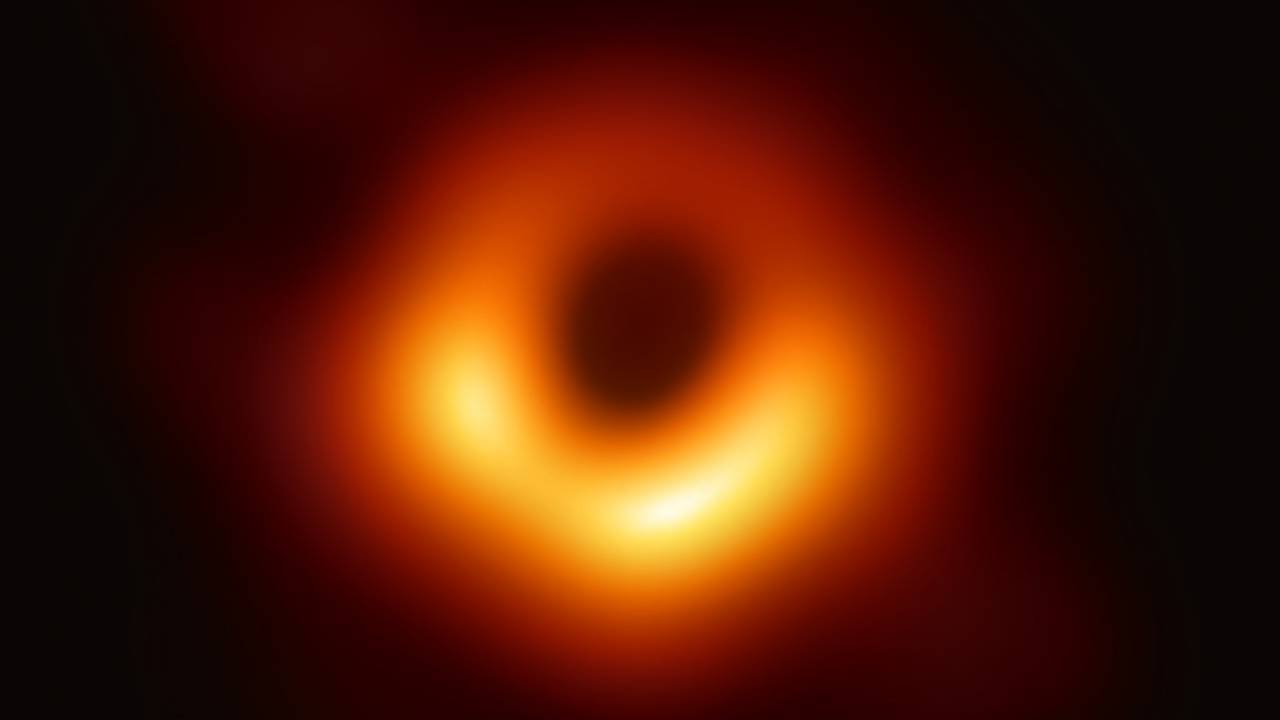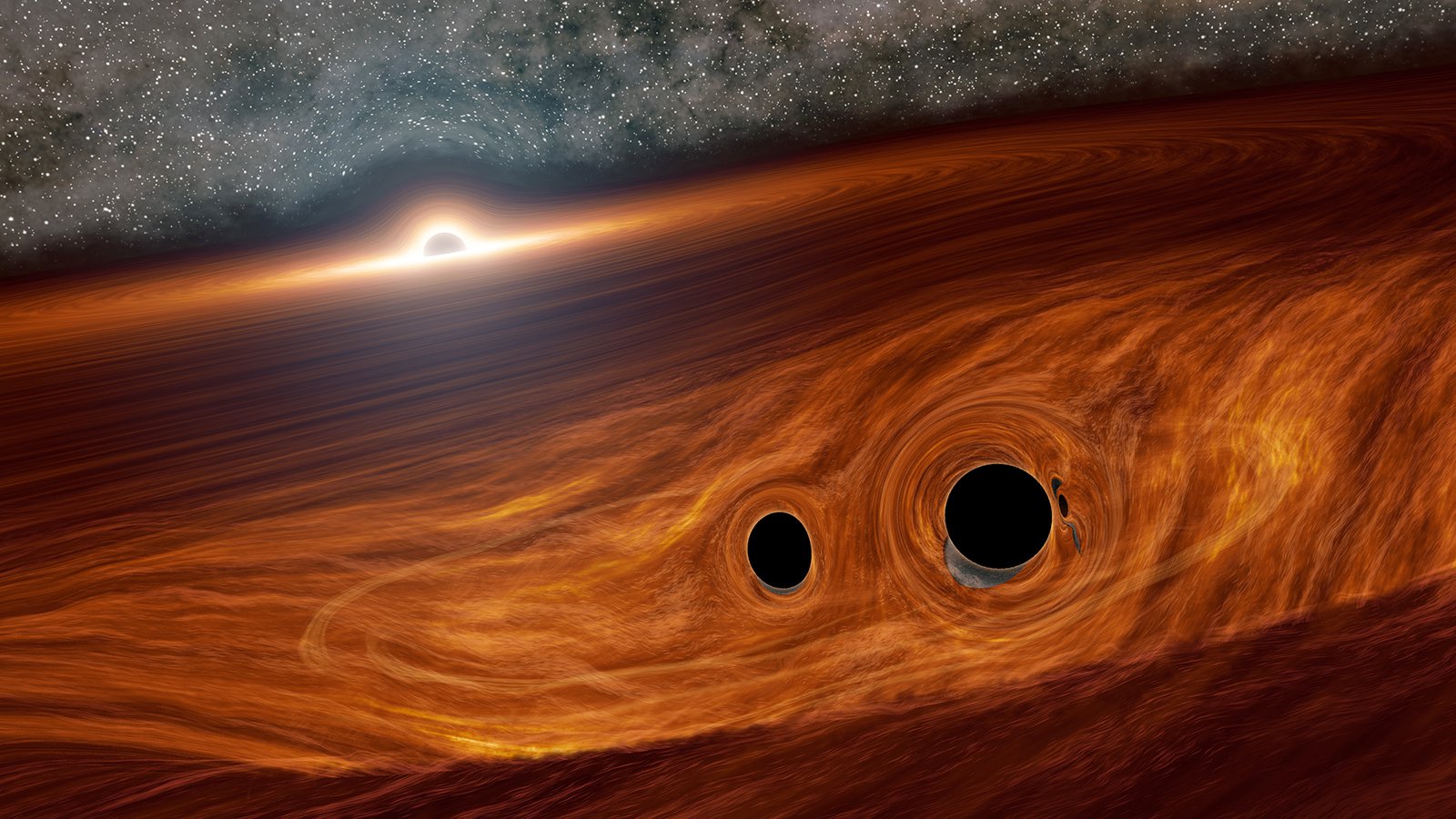
With VLBI, each blindfolded scientist represents the distance, or baseline, between two telescopes. Think of the old joke about a bunch of blindfolded scientists studying different parts of an elephant - one finds an ear, another the tail, and so forth. VLBI combines the data from multiple radio telescopes scattered across the globe to create a virtual, Earth-sized dish, with a resolution equivalent to being able to read the date on a quarter in Los Angeles seen from D.C., Doeleman said. The worldwide team of researchers, comprising 200 people from some 20 countries, constructed the black hole’s image using a technique called very long baseline interferometry (VLBI). The dark center marks where light plunges past the event horizon, never to return the crescent is created by light emitted by hot gas just outside.Įvent Horizon Telescope collaboration Unmasking the InvisibleĬapturing a black hole’s visage requires far more than just a point-and-shoot approach. Here it is.” Scientists used computer codes and months of analysis to construct this image of the supermassive black hole in the center of the galaxy M87. “We have seen and taken a picture of a black hole. “We have seen what we thought was unseeable,” said project director Sheperd Doeleman (Center for Astrophysics, Harvard & Smithsonian) during the press conference. The black hole itself is so large that light would take 1½ days to cross it. The galaxy lies about 55 million light-years away in the constellation Virgo. Scientists have at last “seen” a black hole - and it’s beautiful.Īnnouncing the result at a National Science Foundation press conference in Washington, D.C., representatives of the Event Horizon Telescope collaboration unveiled a reconstructed image of the gargantuan black hole in the giant elliptical galaxy M87. They will each receive 10 times that amount, or $8,646.The Event Horizon Telescope collaboration has reconstructed the shadow of a supermassive black hole. "It signals to the public that we need to play the 'long game,' investing in science even though it may take decades to pay off," he said.Įditor's Note: Due to an editing error, this story originally stated that each winner will receive $865. Winning the Breakthrough Prize for this achievement "highlights the long-term commitment that is required for such discoveries," Doeleman said. With the landmark EHT discovery, black holes were made visible for the first time, but only after many years of dedicated work. "Moving from still images to black hole video will enable new tests of gravity and allow us to study in detail how black holes feed on infalling gas," he said in the email.Īppropriately, the shape of the Breakthrough Prize trophy, a doughnut-like, three-dimensional form called a torus, can be seen in black holes, in the massive, dusty clouds that surround them, according to the Breakthrough Prize website.
.jpg)

What's next for the EHT team? The researchers aim to add to the EHT network of telescopes and launch radio dishes into space in order to capture movies of black holes, Doeleman told Live Science. "We were awe-struck. We almost didn't believe it," he said. "But after many months of continued analysis we were convinced the ring, marking the orbit light takes around the black hole, was real. And then we celebrated." Then, when the teams came together in July 2018 to compare their findings, they saw that all of the groups were producing similar images showing the black hole silhouette. "We split into four teams, each working independently to image the data," Doeleman told Live Science in an email. To produce that astounding image, Doeleman and hundreds of other scientists used data from eight telescopes located around the world, creating an Earth-size "eye" powerful enough to peer into the heart of a galaxy in the Virgo cluster, about 55 million light-years from our planet.

Doeleman, an astrophysicist with the Harvard-Smithsonian Center for Astrophysics. Receiving the prize was "a wonderful validation of more than a decade of hard work, risk taking, failures, successes, and building an expert team that was committed to the highest scientific goals," said EHT director Sheperd S.


 0 kommentar(er)
0 kommentar(er)
